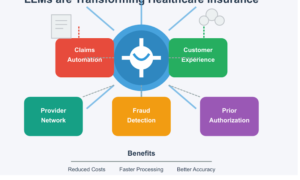The sweeping and accelerated changes wrought by transformative digital technologies have been felt in every industry. Traditional and staid business approaches and models have imploded due to the cumulative forces of the pandemic, the proliferation of loT, Big data, and increasing consumer expectations and sophistication.
Historically, the insurance industry has been slow to modernize, relying heavily upon legacy systems and stale business models. In the face of cutting-edge innovations and modernization technologies, incumbent insurers see the writing on the wall – disruptive technologies are the game-changers that will determine current and future success.
How do we get in the game?
Competition is fierce in most industries, and those who recognize the value of appropriating the greater efficiencies found in the latest innovations will stay at the head of the pack. Before insurance carriers and agencies rush into full-scale digital modernization, an evaluation of core processes and functions can highlight specific areas of need as a starting point. Collaborative input from internal and external stakeholders can provide focus and clarity, illuminating were to maximize the benefits, without too much risk or budgetary commitment. Planning, training, and ‘testing the waters’ is a prudent approach for most companies, and success in one area can provide the foundation for buy-in down the road. With a ‘start small and iterate from there’ approach, a company can plan for skilled staffing, enhanced security requirements, budget allotment, and build a roadmap for future digital innovation.
Digital transformation is rewriting the insurance industry business model. Cloud migration and cloud-native technology is providing insurers with more agile and scalable means for deploying new product offerings and superior customer service.
Technological innovations transforming the insurance industry
Insurers have always relied upon detailed data and client information to define their claims and product offerings. Digital transformation has accelerated the pace, form, and volume of data, necessitating an evolution in the way it is processed, analyzed, distributed, safeguarded, and stored. While there are myriad technological advances that merit discussion, the following technologies are examples of how data is being harnessed and used to shape a new insurance industry model.
- Integrated, automated, and intuitive platform solutions are one of the most transformative developments for every industry. In order for the oceans of daily data input to be truly beneficial, the siloed data sources must be integrated, collated, and centrally warehoused. Time-consuming manual processes are automated and streamlined, and 360-degree visibility provides greater insight into client data for improved engagement and service. Hybridized platforms integrate data that resides on-premises and in public and private clouds with synchronization that optimizes operational workflows, scalability and agility.
- Application Programming Interfaces (API’s) allow disparate applications and systems to communicate and work together. This equips insurers with data sharing and expedient collaboration with all involved parties, providing flexibility and scalability to develop and deploy new solutions and offerings. Systems that are able to receive and respond in an open platform are time-saving and resource sparing.
- Telematics, which enable the long-distance transmission of computerized information, are revolutionizing the auto industry and auto insurance offerings. Devices within autonomous and semi-autonomous vehicles can send, receive, and store telemetry data regarding a vehicle’s location, speed, idling time, braking and acceleration behaviors and vehicle faults. Data can be collected which reveals owner driving habits which can help to inform risk assessment and underwriting accuracy. By deriving a driver profile, insurers can offer safe-driving benefits and more personalized policy pricing.
- Artificial intelligence (AI), machine learning (ML) and deep learning (DL) are redefining the whole approach to claims, underwriting, distribution, and pricing. The data analytics that these technologies provide enables insurers to understand their clients more deeply and render a more personalized customer offering. AI algorithms create comprehensive risk assessment profiles that reduce the cycle time for life, auto, and commercial policy procurement, underwriting, and claims processing, from days and weeks, to minutes. The complex data sources provided by DL, ML and AI innovations are moving the insurance model from its traditional ‘repair and replace’ to one of ‘predict and prevent’.
Synatic’s Nimble, Simple, and Powerful Hybrid Integration Platform (HIP)
The fast, intuitive and easy-to-use capabilities of integration platforms can impact all aspects of the insurance industry process. Connecting disparate data siloes, Synatic’s HIP is a true hybrid iPaaS with ETL, integration, data warehouse, and API management, equipped with pre-built connectors and solutions to integrate apps and data on-premises and in any cloud. With a simple drag-and-drop method into the user’s workflow using low code/no code processes, there is infinite flexibility within a customizable and scalable ecosystem.
Synatic offers an iterative approach that allows insurance carriers to start small and innovate as needed at their own pace. Synatic HIP will equip every incumbent insurer to compete at the highest level, by distributing the right data, to the right person, at the right time.



































